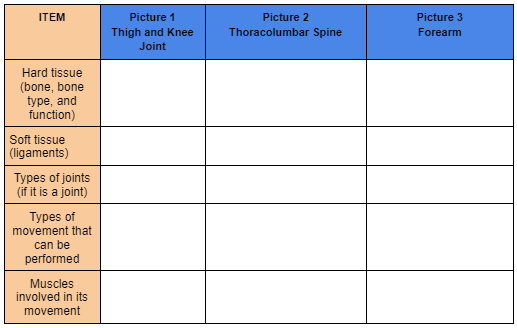-
GeneralGeneral
-
OpenStax Anatomy and Physiology Homepage
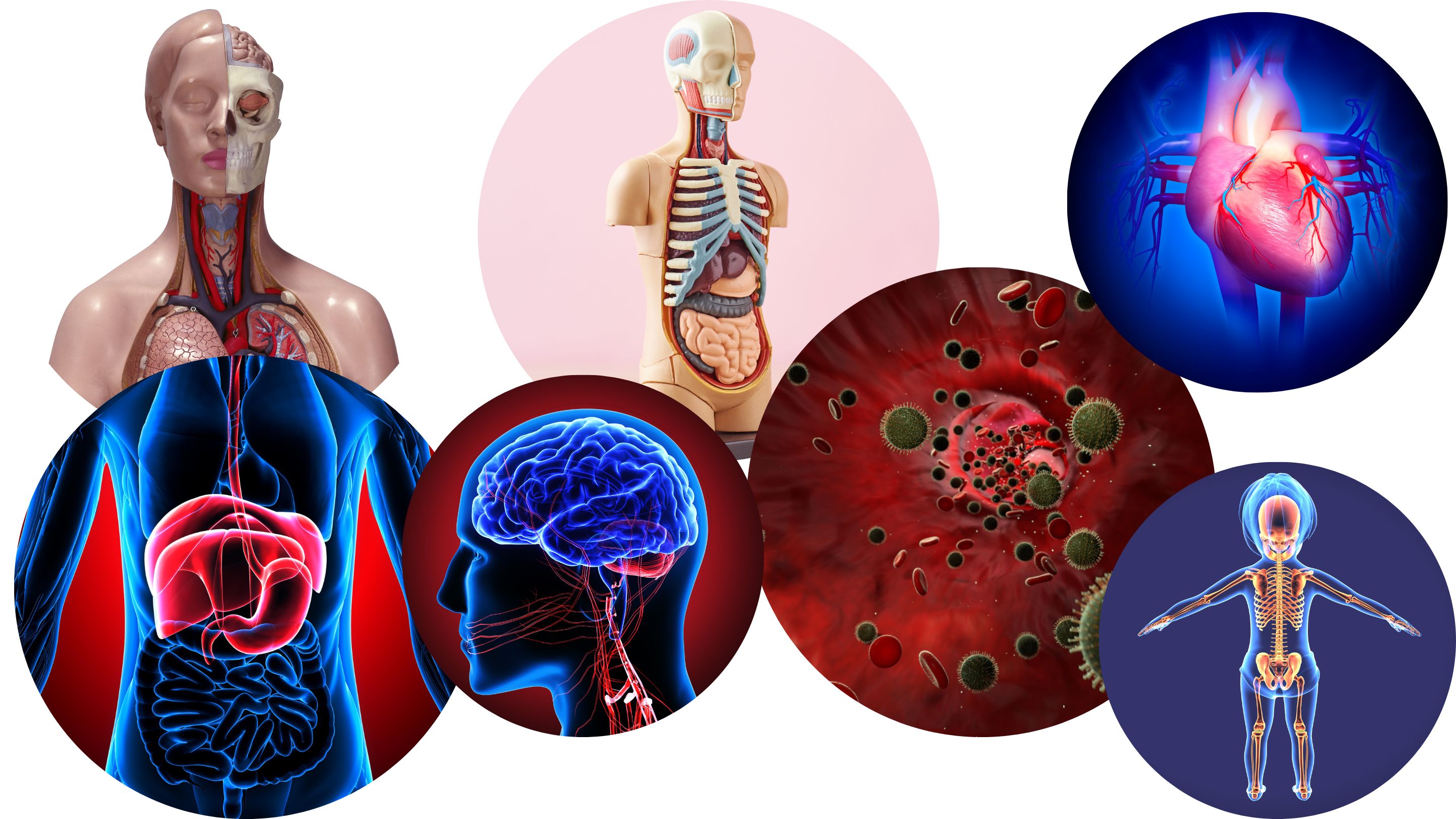

Welcome to the Anatomy and Physiology course. This course will reinforce your fundamental, theoretical, and practical knowledge of anatomy and physiology. In addition, you will learn about health promotion and prevention of the most common diseases, as well as approaching possible scenarios where they will demonstrate their problem-solving skills. It provides you with the basic skills needed. You will have the necessary foundations to be able to carry out more complex studies in the field of medicine and its different specialties.s.
This Anatomy and Physiology course is sponsored in part by the International Development Research Centre and the University of the Incarnate Word School of Osteopathic Medicine. This Anatomy and Physiology course uses learning resources from the OpenStax Library, a nonprofit organization based at Rice University whose mission is to improve student access to education; learning activities for evaluations were developed Carolina Bustillos, MD, DiplEd; Pablo Baldiviezo, MD, MSc; Tristan Aaron Wild, BMSc (Hons); and Jinyuru (Donna) Yang, Bkin High, MSc Medical Science (Hons).
For publications on NextGenU.org’s courses’ efficacy, see NextGenU.org’s publication page. Subscribe to our newsletter to be notified of future updates and new courses and to be part of our community.
There are six modules to complete, which provide an introduction to:
Module 1: Levels of Organization
Module 2: Support and Movement
Module 3: Regulation, Integration, and Control
Module 4: Fluids and Transport
Module 5: Energy, Maintenance, and Environmental Exchange
Module 6: Human Development and the Continuity of LifeThe completion time for this course is estimated at 277 hours, comprising 86 hours of learning resources, 172 hours to study content and assimilation, and 18 hours of participating in learning activities and quizzes, to assist the learners in the synthesis of learning materials. This course is equivalent to 6 credit hours.
This course requires the completion of all activities. At the end of each module, there is a practice quiz of 10 multiple-choice questions. After you’ve completed each lesson, quiz, and learning activity, at the end of the course, you’ll have access to a final exam consisting of 40 multiple-choice questions and a chance to evaluate this course. Participants have up to three opportunities to take the final exam and achieve the required score of >=70%. Once you’ve passed that last test, you will be able to download a certificate of completion from NextGenU.org and our course’s co-sponsoring organizations. We keep your personal information confidential, never sell any of your information, and only use anonymized data for research purposes. Also, we are happy to report your testing information and share your work with anyone (your school, employer, etc.) at your request.
Engaging with this Course:
You may browse this course for free to learn for your personal enrichment; there are no requirements. To register in this course, it is required that learners have obtained a college-level/bachelor's degree.
- all the reading requirements;
- all quizzes and pass with a 80% with unlimited attempts;
- all learning activities;
- the final exam with a minimum of 80% and a maximum of 3 attempts;
- the self and course evaluation forms.
To obtain credit:
- Complete all requirements listed above for the certificate, and
- Your learning institution or workplace should approve the partner-university-sponsored NextGenU.org course for educational credit, as they would for their learner taking a course anywhere.
NextGenU.org is happy to provide your institution with:
- A link to and description of the course training so they can see all its components, including the co-sponsoring universities and other professional organization co-sponsors;
- Your grade on the final exam;
- Your work products (e.g., case study activities) and any other required or optional shared materials that you produce and authorize to share with them;
- Your evaluations -- course and self-assessments;
- A copy of your certificate of completion, with the co-sponsoring universities and other organizations listed.
To obtain a degree, NextGenU.org co-sponsors degree programs with institutional partners. To obtain a full degree co-sponsored with NextGenU.org, registrants must be enrolled in a degree program as a student of a NextGenU.org institutional partner. If you think your institution might be interested in offering a degree with NextGenU.org, contact us.
We hope you will find this a rewarding learning experience, and we count on your assessment and feedback to help us improve this training for future students.
Here are the next steps to take the course and earn a certificate.
- Complete the registration form.
- Take the pre-test.
- Begin the course with Module 1:Levels of Organization. In each lesson, read the description, complete all required readings and any required activity, as well as take the corresponding quizzes.
-
Module 1: Levels of Organization
In this module, you will understand the basic human anatomy and physiology, including its language, the levels of organization, and the basics of chemistry and cell biology. These chapters will provide you with a foundation for further study of the body. They also will focus particularly on how the body’s regions, important chemicals, and cells maintain homeostasis.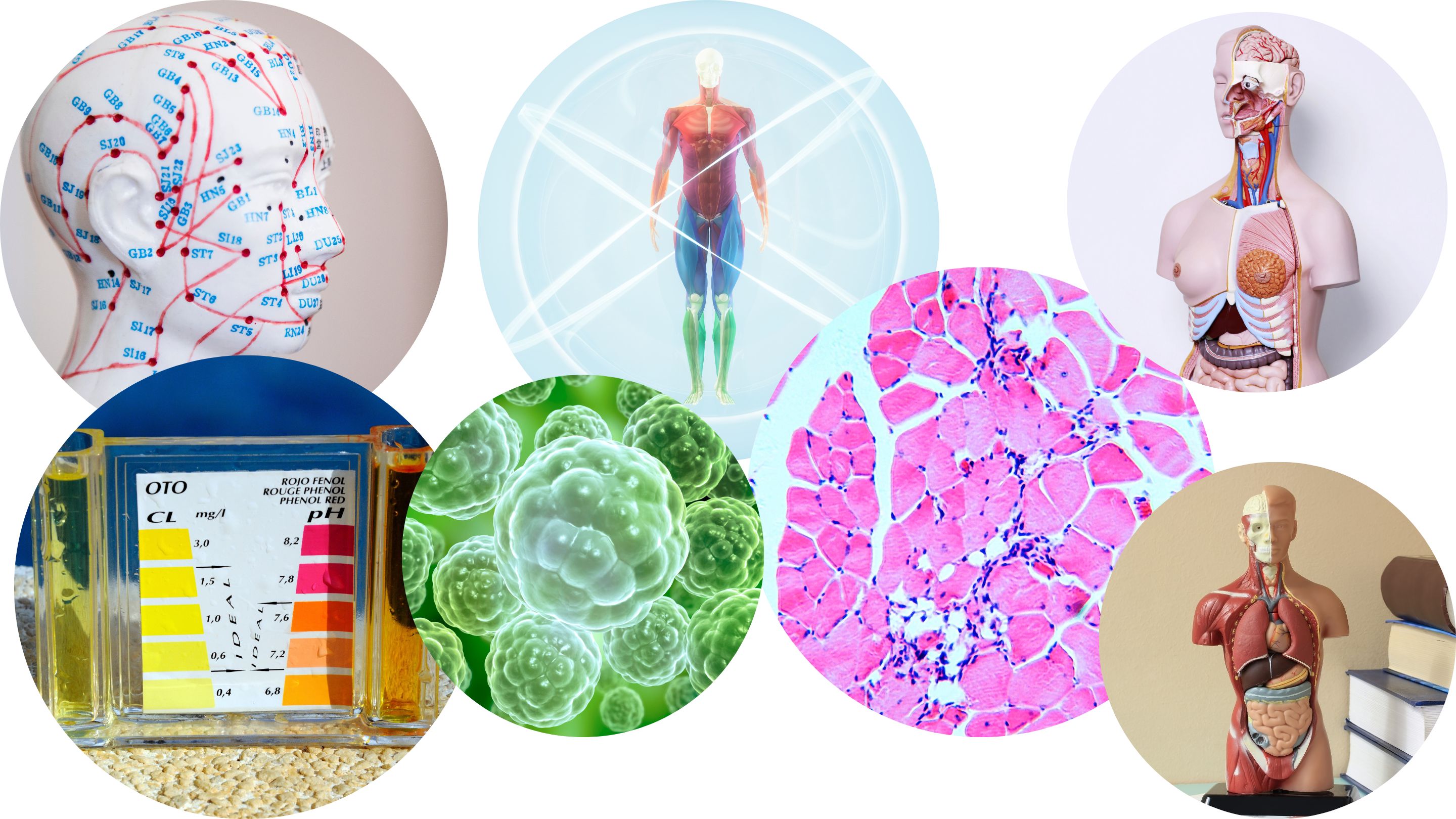
-
Module 1: Lesson 1: An Introduction to the Human Body
Student Learning Outcomes:
Upon completion of this lesson, you will be able to:
- Distinguish between anatomy and physiology, and identify several branches of each.
- Describe the structure of the body, from simplest to most complex, in terms of the six levels of organization.
- Identify the functional characteristics of human life.
- Identify the four requirements for human survival.
- Define homeostasis and explain its importance to normal human functioning.
- Use appropriate anatomical terminology to identify key body structures, body regions, and directions in the body.
- Compare and contrast at least four medical imaging techniques in terms of their function and use in medicine.
8 URLs, 1 Forum -
Module 1: Lesson 2: The Chemical Level of Organization
Upon completion of this module, students you will be able to:Student Learning Outcomes:
- Describe the fundamental composition of matter.
- Identify the three subatomic particles.
- Identify the four most abundant elements in the body.
- Explain the relationship between an atom’s number of electrons and its relative stability.
- Define homeostasis and explain its importance to normal human functioning.
- Distinguish between ionic bonds, covalent bonds, and hydrogen bonds.
- Explain how energy is invested, stored, and released via chemical reactions, particularly those reactions that are critical to life.
- Explain the importance of the inorganic compounds that contribute to life, such as water, salts, acids, and bases.
- Compare and contrast the four important classes of organic (carbon-based) compounds—proteins, carbohydrates, lipids, and nucleic acids—according to their composition and functional importance to human life.
6 URLs -
Module 1: Lesson 3: The Cellular Level of Organization
Upon completion of this module, students you will be able to:Student Learning Outcomes:
- Describe the structure and function of the cell membrane, including its regulation of materials into and out of the cell.
- Describe the functions of the various cytoplasmic organelles.
- Explain the structure and contents of the nucleus, as well as the process of DNA replication.
- Explain the process by which a cell builds proteins using the DNA code.
- List the stages of the cell cycle in order, including the steps of cell division in somatic cells.
- Discuss how a cell differentiates and becomes more specialized.
- List the morphological and physiological characteristics of some representative cell types in the human body.
7 URLs -
Module 1: Lesson 4: The Tissue Level of Organization
Upon completion of this module, students you will be able to:Student Learning Outcomes:
- Identify the main tissue types and discuss their roles in the human body.
- Identify the four types of tissue membranes and the characteristics of each that make them functional.
- Explain the functions of various epithelial tissues and how their forms enable their functions.
- Explain the functions of various connective tissues and how their forms enable their functions.
- Describe the characteristics of muscle tissue and how these enable function.
- Discuss how a cell differentiates and becomes more specialized.
- Discuss the characteristics of nervous tissue and how these enable information processing and control of muscular and glandular activities.
7 URLs, 1 Forum, 1 Quiz -
Module 2: Support and Movement
In this module, you will explore the skin, the largest organ of the body, and will examine the body’s skeletal and muscular systems, following a traditional sequence of topics. You will through specific systems of the body, and as it does so, you will maintain a focus on homeostasis as well as those diseases and conditions that can disrupt it.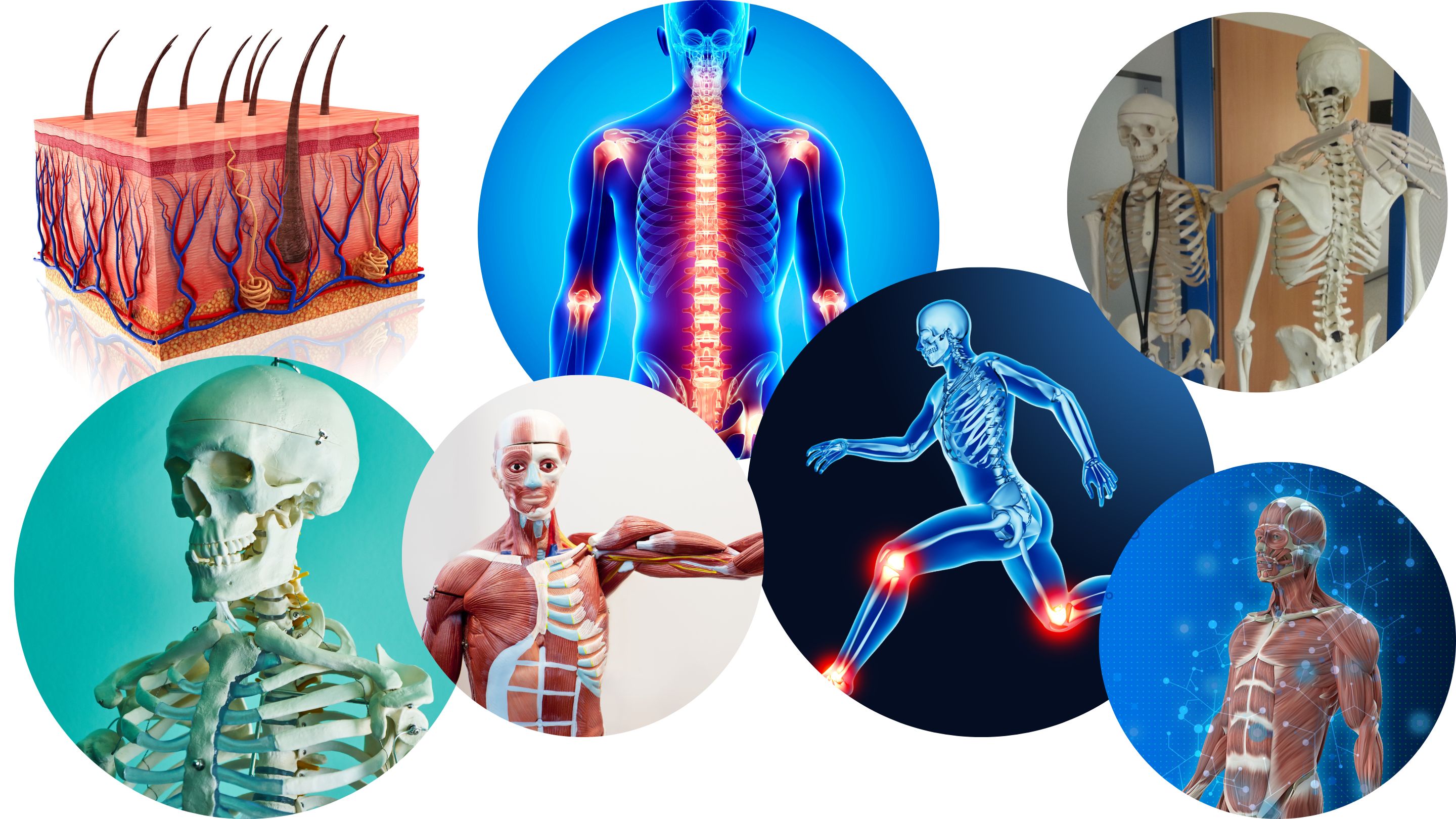
-
Module 2: Lesson 1: The Integumentary System
Upon completion of this module, students you will be able to:Student Learning Outcomes:
- Describe the integumentary system and the role it plays in homeostasis.
- Describe the layers of the skin and the functions of each layer.
- Describe the accessory structures of the skin and the functions of each.
- Describe the changes that occur in the integumentary system during the aging process.
- Discuss several common diseases, disorders, and injuries that affect the integumentary system.
- Explain treatments for some common diseases, disorders, and injuries of the integumentary system.
5 URLs -
Module 2: Lesson 2: Bone Tissue and the Skeletal System
Upon completion of this module, students you will be able to:Student Learning Outcomes:
- List and describe the functions of bones.
- Describe the classes of bones.
- Discuss the process of bone formation and development.
- Explain how bone repairs itself after a fracture.
- Discuss the effect of exercise, nutrition, and hormones on bone tissue.
- Describe how an imbalance of calcium can affect bone tissue.
8 URLs -
Module 2: Lesson 3: Axial Skeleton
Upon completion of this lesson, you will be able to:Student Learning Outcomes:
- Describe the functions of the skeletal system and define its two major subdivisions.
- Identify the bones and bony structures of the skull, the cranial suture lines, the cranial fossae, and the openings in the skull.
- Discuss the vertebral column and regional variations in its bony components and curvatures.
- Describe the components of the thoracic cage.
- Discuss the embryonic development of the axial skeleton.
6 URLs -
Module 2: Lesson 4: The Appendicular Skeleton
Upon completion of this lesson, you will be able to:Student Learning Outcomes:
- Discuss the bones of the pectoral and pelvic girdles, and describe how these unite the limbs with the axial skeleton.
- Describe the bones of the upper limb, including the bones of the arm, forearm, wrist, and hand.
- Identify the features of the pelvis and explain how these differ between the adult male and female pelvis.
- Describe the bones of the lower limb, including the bones of the thigh, leg, ankle, and foot.
- Describe the embryonic formation and growth of the limb bones.
6 URLs -
Module 2: Lesson 5: Joints
Upon completion of this lesson, you will be able to:Student Learning Outcomes:
- Discuss both functional and structural classifications for body joints.
- Describe the characteristic features for fibrous, cartilaginous, and synovial joints and give examples of each.
- Define and identify the different body movements.
- Discuss the structure of specific body joints and the movements allowed by each.
- Explain the development of body joints.
8 URLs -
Module 2: Lesson 6: Muscle Tissue
Upon completion of this lesson, you will be able to:Student Learning Outcomes:
- Explain the organization of muscle tissue.
- Describe the function and structure of skeletal, cardiac muscle, and smooth muscle.
- Explain how muscles work with tendons to move the body.
- Describe how muscles contract and relax.
- Define the process of muscle metabolism.
- Explain how the nervous system controls muscle tension.
- Relate the connections between exercise and muscle performance.
- Explain the development and regeneration of muscle tissue.
10 URLs -
Module 2: Lesson 7: The Muscular System
Upon completion of this lesson, you will be able to:Student Learning Outcomes:
- Describe the actions and roles of agonists and antagonists.
- Explain the structure and organization of muscle fascicles and their role in generating force.
- Explain the criteria used to name skeletal muscles.
- Identify the skeletal muscles and their actions on the skeleton and soft tissues of the body.
- Identify the origins and insertions of skeletal muscles and the prime movements.
7 URLs, 2 Forums, 1 Quiz -
Module 3: Regulation, Integration, and Control
This module helps you to answer questions about nervous and endocrine system control and regulation. In a break with the traditional sequence of topics, the special senses are integrated into the chapter on the somatic nervous system. The chapter on the neurological examination will offer you a unique approach to understanding nervous system function using five simple but powerful diagnostic tests.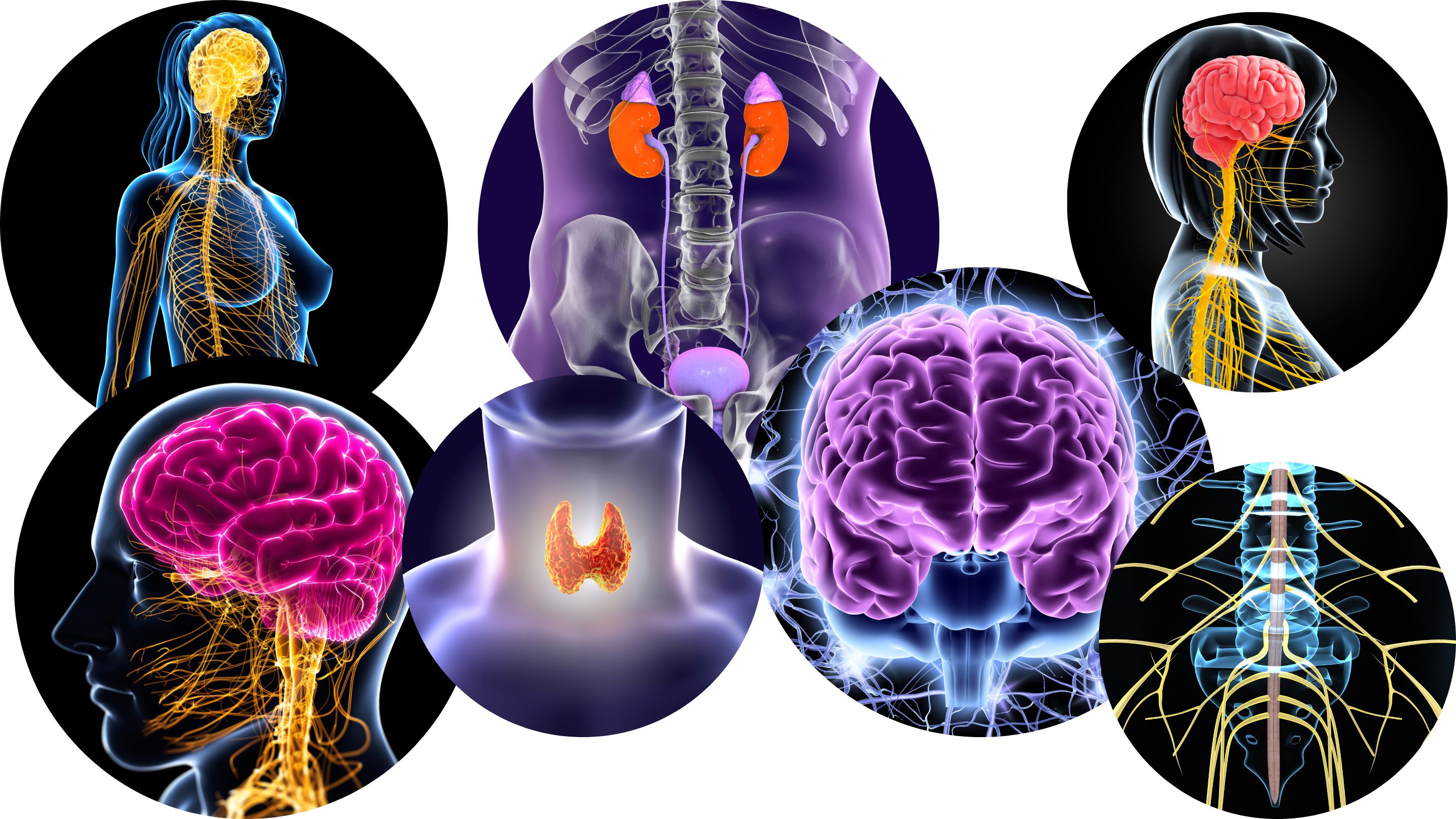
-
Module 3: Lesson 1:The Nervous System and Nervous Tissue
Upon completion of this lesson, you will be able to:Student Learning Outcomes:
- Name the major divisions of the nervous system, both anatomical and functional.
- Describe the functional and structural differences between gray matter and white matter structures.
- Name the parts of the multipolar neuron in order of polarity.
- List the types of glial cells and assign each to the proper division of the nervous system, along with their function(s).
- Distinguish the major functions of the nervous system: sensation, integration, and response.
- Describe the components of the membrane that establish the resting membrane potential.
- Describe the changes that occur to the membrane that result in the action potential.
- Explain the differences between types of graded potentials.
- Categorize the major neurotransmitters by chemical type and effect.
6 URLs -
Module 3 : Lesson 2: Anatomy of the Nervous System
Upon completion of this lesson, you will be able to:Student Learning Outcomes:
- Relate the developmental processes of the embryonic nervous system to the adult structures.
- Name the major regions of the adult nervous system.
- Locate regions of the cerebral cortex on the basis of anatomical landmarks common to all human brains.
- Describe the regions of the spinal cord in cross-section.
- List the cranial nerves in order of anatomical location and provide the central and peripheral connections.
- List the spinal nerves by vertebral region and by which nerve plexus each supplies.
5 URLs - Relate the developmental processes of the embryonic nervous system to the adult structures.
-
Module 3: Lesson 3: The Somatic Nervous System
Upon completion of this lesson, you will be able to:Student Learning Outcomes:
- Describe the components of the somatic nervous system.
- Name the modalities and submodalities of the sensory systems.
- Distinguish between general and special senses.
- Describe regions of the central nervous system that contribute to somatic functions.
- Explain the stimulus-response motor pathway.
4 URLs - Describe the components of the somatic nervous system.
-
Module 3: Lesson 4: The Autonomic Nervous System
Upon completion of this lesson, you will be able to:Student Learning Outcomes:
- Describe the components of the autonomic nervous system.
- Differentiate between the structures of the sympathetic and parasympathetic divisions in the autonomic nervous system.
- Name the components of a visceral reflex specific to the autonomic division to which it belongs.
- Predict the response of a target effector to autonomic input on the basis of the released signaling molecule.
- Describe how the central nervous system coordinates and contributes to autonomic functions.
5 URLs, 1 Forum - Describe the components of the autonomic nervous system.
-
Module 3: Lesson 5: The Neurological Exam
Upon completion of this lesson, you will be able to:Student Learning Outcomes:
- Describe the major sections of the neurological exam.
- Outline the benefits of rapidly assessing neurological function.
- Relate anatomical structures of the nervous system to specific functions.
- Diagram the connections of the nervous system to the musculature and integument involved in primary sensorimotor responses.
- Compare and contrast the somatic and visceral reflexes with respect to how they are assessed through the neurological exam.
6 URLs, 1 Forum - Describe the major sections of the neurological exam.
-
Module 3: Lesson 6: The Endocrine System
Upon completion of this lesson, you will be able to:Student Learning Outcomes:
- Identify the contributions of the endocrine system to homeostasis.
- Discuss the chemical composition of hormones and the mechanisms of hormone action.
- Summarize the site of production, regulation, and effects of the hormones of the pituitary, thyroid, parathyroid, adrenal, and pineal glands.
- Discuss the hormonal regulation of the reproductive system.
- Explain the role of the pancreatic endocrine cells in the regulation of blood glucose.
- Identify the hormones released by the heart, kidneys, and other organs with secondary endocrine functions.
- Discuss several common diseases associated with endocrine system dysfunction.
- Discuss the embryonic development of, and the effects of aging on, the endocrine system.
12 URLs, 1 Forum, 1 Quiz - Identify the contributions of the endocrine system to homeostasis.
-
Module 4: Fluids and Transport
You will examine the principal means of transport for materials needed to support the human body, regulate its internal environment, and provide protection.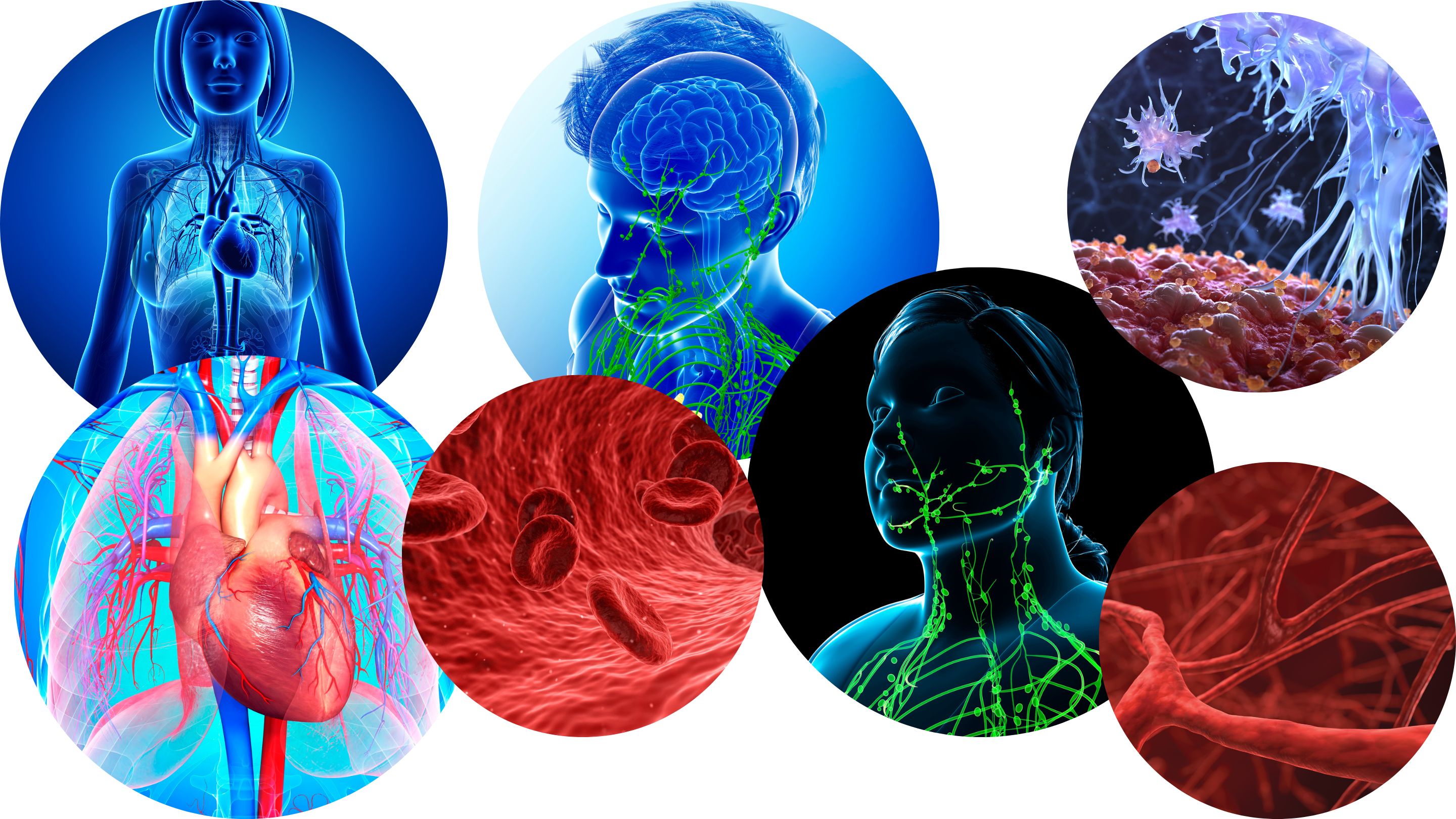
-
Module 4: Lesson 1:The Cardiovascular System: Blood
Upon completion of this lesson, you will be able to:Student Learning Outcomes:
- Identify the primary functions of blood, its fluid and cellular components, and its physical characteristics.
- Identify the most important proteins and other solutes present in blood plasma.
- Describe the formation of the formed element components of blood.
- Discuss the structure and function of red blood cells and hemoglobin.
- Classify and characterize white blood cells.
- Describe the structure of platelets and explain the process of hemostasis.
- Explain the significance of AB and Rh blood groups in blood transfusions.
- Discuss a variety of blood disorders.
7 URLs - Identify the primary functions of blood, its fluid and cellular components, and its physical characteristics.
-
Module 4: Lesson 2: The Cardiovascular System: The Heart
Upon completion of this lesson, you will be able to:Student Learning Outcomes:
- Identify and describe the interior and exterior parts of the human heart.
- Describe the path of blood through the cardiac circuits.
- Describe the size, shape, and location of the heart.
- Compare cardiac muscle to skeletal and smooth muscle.
- Explain the cardiac conduction system.
- Describe the process and purpose of an electrocardiogram.
- Explain the cardiac cycle.
- Calculate cardiac output.
- Describe the effects of exercise on cardiac output and heart rate.
- Name the centers of the brain that control heart rate and describe their function.
- Identify other factors affecting heart rate.
- Describe fetal heart development.
6 URLs - Identify and describe the interior and exterior parts of the human heart.
-
Module 4: Lesson 3: The Cardiovascular System: Blood Vessels and Circulation
Upon completion of this lesson, you will be able to:Student Learning Outcomes:
- Compare and contrast the anatomical structure of arteries, arterioles, capillaries, venules, and veins.
- Accurately describe the forces that account for capillary exchange.
- List the major factors affecting blood flow, blood pressure, and resistance.
- Describe how blood flow, blood pressure, and resistance interrelate.
- Discuss how the neural and endocrine mechanisms maintain homeostasis within the blood vessels
- Describe the interaction of the cardiovascular system with other body systems.
- Label the major blood vessels of the pulmonary and systemic circulations.
- Identify and describe the hepatic p.ortal system.
- Describe the development of blood vessels and fetal circulation.
- Compare fetal circulation to that of an individual after birth.
7 URLs, 1 Forum - Compare and contrast the anatomical structure of arteries, arterioles, capillaries, venules, and veins.
-
Module 4: Lesson 4: The Lymphatic and Immune System
Upon completion of this lesson, you will be able to:Student Learning Outcomes:
- Identify the components and anatomy of the lymphatic system.
- Discuss the role of the innate immune response against pathogens.
- Describe the power of the adaptive immune response to cure disease.
- Explain immunological deficiencies and over-reactions of the immune system.
- Discuss the role of the immune response in transplantation and cancer.
- Describe the interaction of the immune and lymphatic systems with other body systems.
8 URLs, 1 Forum, 1 Quiz - Identify the components and anatomy of the lymphatic system.
-
Module 5: Energy, Maintenance, and Environmental Exchange
In this module, you will discover the interaction between body systems and the outside environment for the exchange of materials, the capture of energy, the release of waste, and the overall maintenance of the internal systems that regulate the exchange. The explanations and illustrations are particularly focused on how structure relates to function.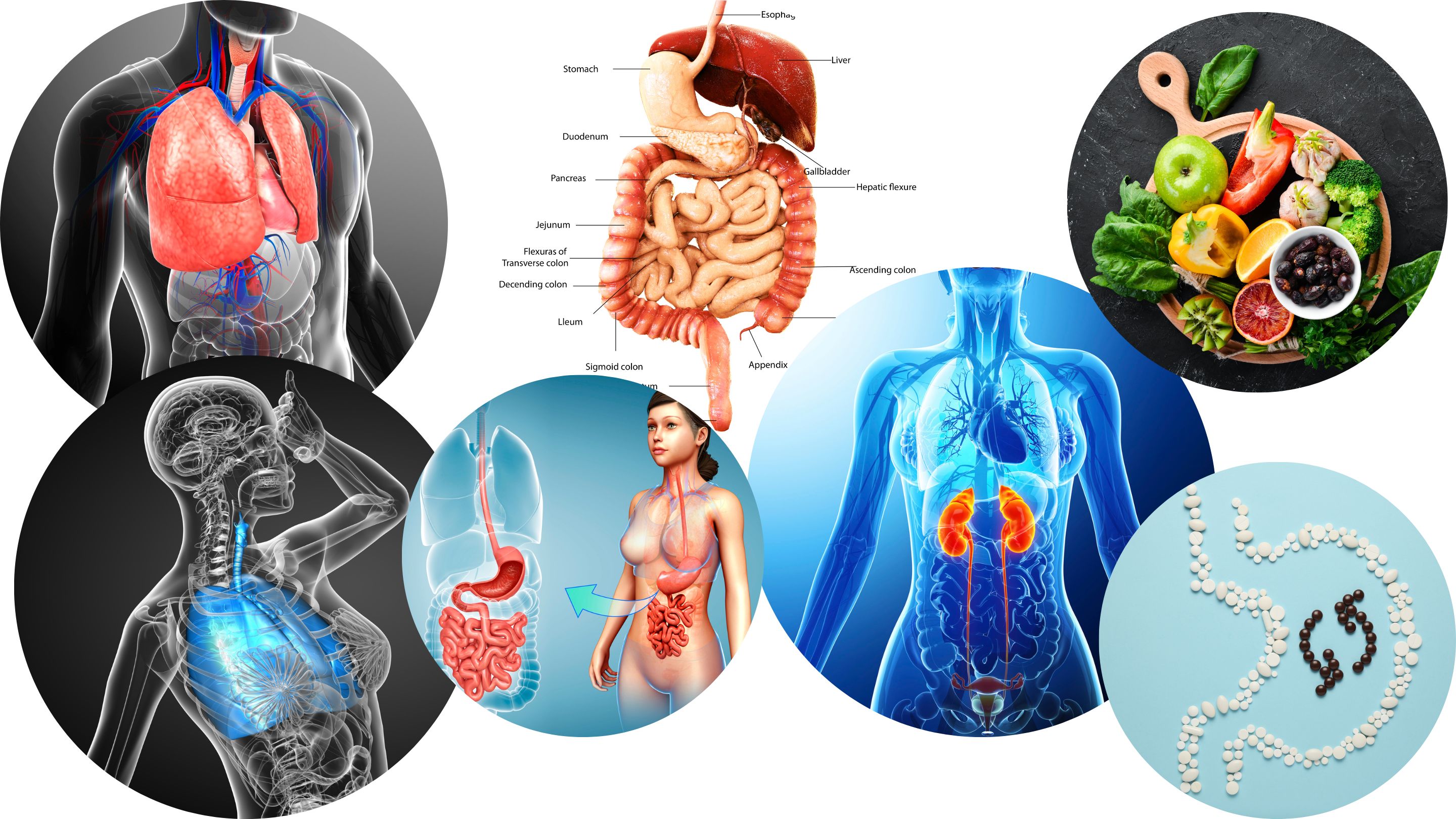
-
Module 5: Lesson 1: The Respiratory System
Upon completion of this lesson, you will be able to:Student Learning Outcomes:
- List the structures of the respiratory system.
- List the major functions of the respiratory system.
- Outline the forces that allow for air movement into and out of the lungs.
- Outline the process of gas exchange.
- Summarize the process of oxygen and carbon dioxide transport within the respiratory system.
- Create a flow chart illustrating how respiration is controlled.
- Discuss how the respiratory system responds to exercise.
- Describe the development of the respiratory system in the embryo.
8 URLs, 1 Forum - List the structures of the respiratory system.
-
Module 5: Lesson 2: The Digestive System
Upon completion of this lesson, you will be able to:Student Learning Outcomes:
- List and describe the functional anatomy of the organs and accessory organs of the digestive system.
- Discuss the processes and control of ingestion, propulsion, mechanical digestion, chemical digestion, absorption, and defecation.
- Discuss the roles of the liver, pancreas, and gallbladder in digestion.
- Compare and contrast the digestion of the three macronutrients.
8 URLs - List and describe the functional anatomy of the organs and accessory organs of the digestive system.
-
Module 5: Lesson 3: Metabolism and Nutrition
Upon completion of this lesson, you will be able to:Student Learning Outcomes:
- Describe the processes involved in anabolic and catabolic reactions.
- List and describe the steps necessary for carbohydrate, lipid, and protein metabolism.
- Explain the processes that regulate glucose levels during the absorptive and postabsorptive states.
- Explain how metabolism is essential to maintaining body temperature (thermoregulation).
- Summarize the importance of vitamins and minerals in the diet.
8 URLs, 1 Forum - Describe the processes involved in anabolic and catabolic reactions.
-
Module 5: Lesson 4: The Urinary System
Upon completion of this lesson, you will be able to:Student Learning Outcomes:
- Describe the composition of urine.
- Label structures of the urinary system.
- Characterize the roles of each of the parts of the urinary system.
- Illustrate the macroscopic and microscopic structures of the kidney.
- Trace the flow of blood through the kidney.
- Outline how blood is filtered in the kidney nephron.
- Provide symptoms of kidney failure.
- List some of the solutes filtered, secreted, and reabsorbed in different parts of the nephron.
- Describe the role of a portal system in the kidney.
- Explain how urine osmolarity is hormonally regulated.
- Describe the regulation of major ions by the kidney.
- Summarize the role of the kidneys in maintaining acid–base balance.
11 URLs - Describe the composition of urine.
-
Module 5: Lesson 5: Fluid, Electrolyte, and Acid-Base Balance
Upon completion of this lesson, you will be able to:Student Learning Outcomes:
- Identify the body’s main fluid compartments.
- Define plasma osmolality and identify two ways in which plasma osmolality is maintained.
- Identify the six ions most important to the function of the body.
- Define buffer and discuss the role of buffers in the body.
- Explain why bicarbonate must be conserved rather than reabsorbed in the kidney.
- Identify the normal range of blood pH and name the conditions where one has a blood pH that is either too high or too low.
6 URLs, 1 Forum, 1 Quiz - Identify the body’s main fluid compartments.
-
Module 6: Human Development and the Continuity of Life
This closing module examines the male and female reproductive systems, describe the process of human development and the different stages of pregnancy, and ends with a review of the mechanisms of inheritance.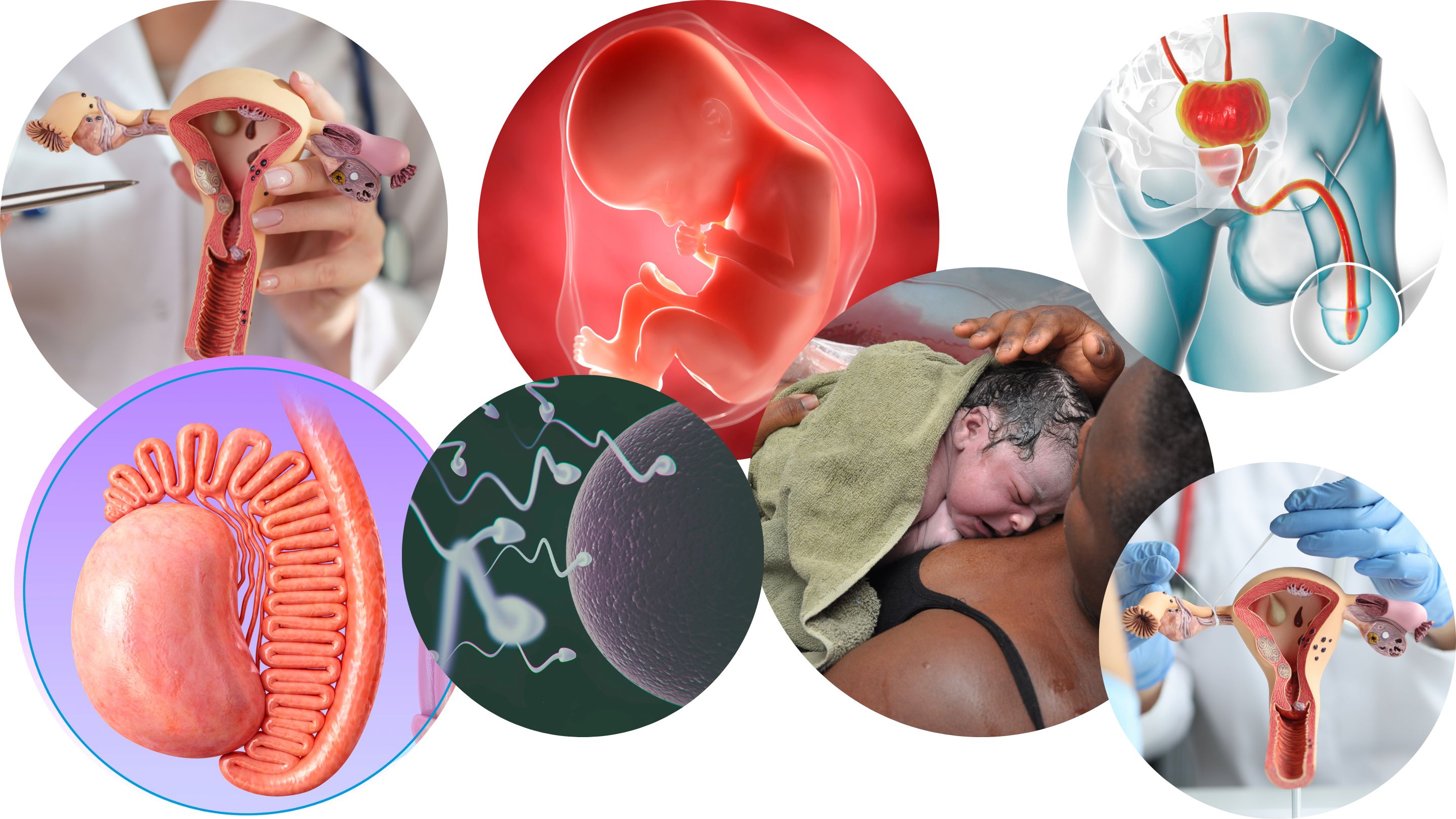
-
Module 6: Lesson 1: The Reproductive System
Upon completion of this lesson, you will be able to:Student Learning Outcomes:
- Describe the anatomy of the reproductive systems, including their accessory structures.
- Explain the role of hypothalamic and pituitary hormones in reproductive function.
- Trace the path of a sperm cell from its initial production through fertilization of an oocyte.
- Explain the events in the ovary prior to ovulation.
- Describe the development and maturation of the sex organs and the emergence of secondary sex characteristics during puberty.
4 URLs - Describe the anatomy of the reproductive systems, including their accessory structures.
-
Module 6: Lesson 2: Development and Inheritance
Upon completion of this lesson, you will be able to:Student Learning Outcomes:
- List and explain the steps involved in fertilization.
- Describe the major events in embryonic development..
- Describe the major events in fetal development.
- Describe the physiologic adjustments that the newborn must make in the first hours of extrauterine life.
- Summarize the physiology of lactation.
- Classify and describe the different patterns of inheritance.
8 URLs, 1 Forum, 1 Quiz - List and explain the steps involved in fertilization.
-
Course and Self Evaluation & Certificate
 In this section, you can provide feedback about this course to help us make NextGenU.org better. Once evaluations are completed, you will be able to download your certificate of completion.
In this section, you can provide feedback about this course to help us make NextGenU.org better. Once evaluations are completed, you will be able to download your certificate of completion.

